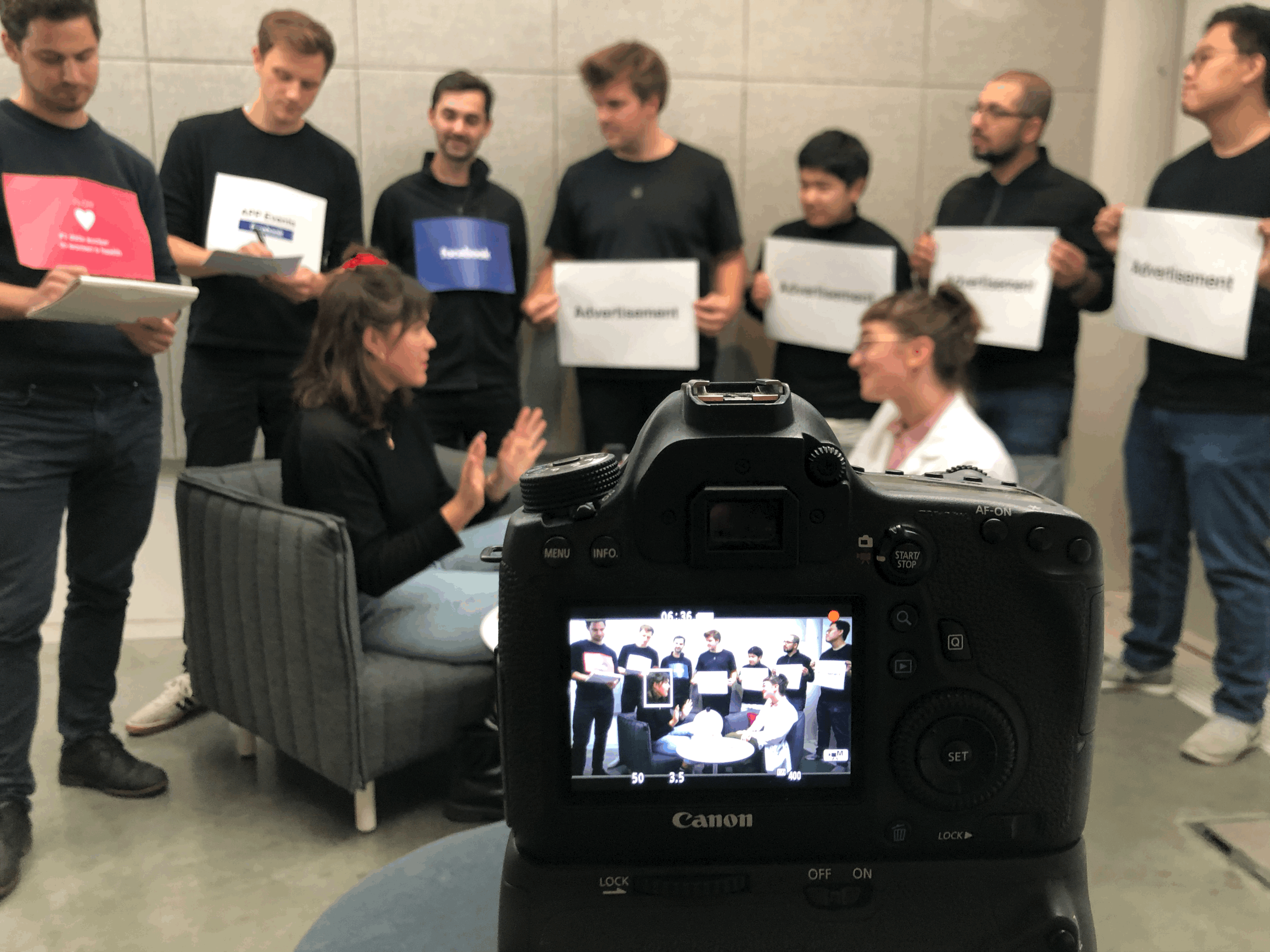
MENSTRUAPPS: The lie about FEMtech
In this one week project we were exploring the topic of period politics and how FEMtech does not really have a lot to do with feminist approaches. Much rather it is a marketing strategy and a way of making money. As a kick-off of the course “Fluid Assemblages” we chose to look into period tracking apps and had to find out the ugly truth about “intimate surveillance” and who really makes money with our “bloody” data.
It doesn’t come as a surprise that this highly personal information is being used for mainly commercial reasons and the rising interest in women’s across the health care sector, understanding from our research that according to Frost & Sullivan that women’s purchasing power is increasing as a consequence of this so-called “she economy”. With our findings in our desk research we decided to try a more satirical approach by creating the period game “Flow” and capturing our insights in a comical talk show format.
THE VIDEO
The video is a comical approach dealing with the described issues above. It furthermore explains how companies like Facebook have taken advantage through information sharing. Some of the apps disclaim in their privacy policy that they can use the information it receives to help their business partners (in our example Facebook) to meet their business objectives. They improve their algorithms, they become better and better and like this sell your data to potential advertisers.
https://chupadados.codingrights.org/en/menstruapps-como-transformar-sua-menstruacao-em-dinheiro-para-os-outros/
Why is our cycle data valuable?
There is very few other life stages in a woman’s life, apart from starting to study, that she is as valuable in a capitalist society as when she is pregnant.
This is one of the times where people are most likely to get hooked for new brands and consequently, very likely to spend money. So, “customised” advertising is a great investment at that stage. But not only when being pregnant, it is very well analysed what we are receptive for depending where we are at in our cycle - and advertisements are being tailored to that.
Early on in the process we gained the understanding of data as not being neutral or authoritative; how this is experienced as discrimination in the world around us; using the example of femtech and intimate surveillance through a phenomenological approach, as a criticism on oppressive or patriarchal structures in science, technology and design. We want to draw attention to the problem that these apps are used to develop standards of healthy cycles but the main users are mostly American and European white women. So the question is - what kind of new normal is being created based on only the women who have access to these apps?
*When using the term “woman” in this text I am referring to the widely spread Western understanding of a neat binary that neglects all knowing of other cultures and societies where we don’t rigidly try to force people into the two categories of man and woman. I am using the term in order to criticise patriarchal, hetero-normative structures. I stand behind every person identifying as trans man, trans woman and non-binary people.
Design of cycle tracking apps
The design of period tracking apps in itself is outrageous. It leaves the bitter taste and the impression designers do not take the information provided very serious. Why do they use this fake-empowering language instead of straightforward medical terminology?
Language in these apps is built on binary and heteronormative systems, they assume that people with periods want to get pregnant, they assume everyone can get pregnant and they assume it is only women who have periods.
Also, what about those odd design elements like fluffy clouds, glittery flowers? Very little online research regarding this topic is enough to understand that the choice of this specific type of UI elements are a result of a male dominated Silicon Valley culture focused on convincing a woman to spend as much time as possible looking at ads, while giving away intimate data, for more targeted ads.
I am sure as designers we can do better than that.



